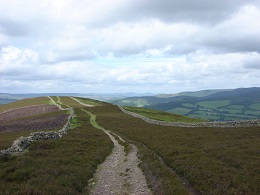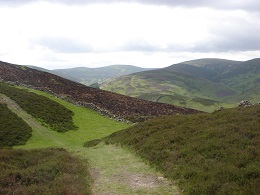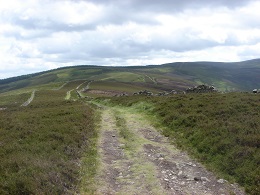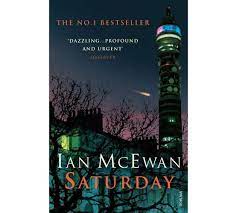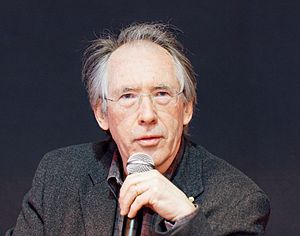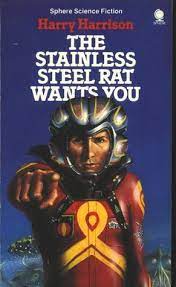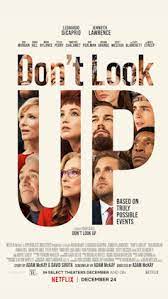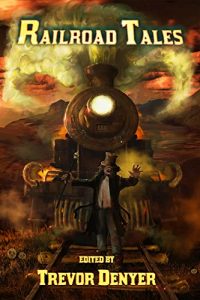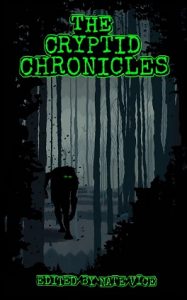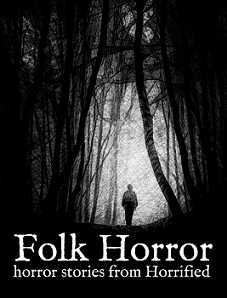
From wikipedia.org / Scottish National Portrait Gallery
Today is January 25th and this evening is Burns Night, when Scotland’s national bard Robert Burns will be commemorated at suppers across the globe with the reciting of his Scots-language verse, the playing of traditional Scottish music and the quaffing of much, much whisky.
Recently, a newspaper reported that during his lifetime Burns had been urged not to write in the Scots language because it would alienate readers who weren’t Scottish. “Dr. John Moore, a Scottish physician and travel author, who wrote regularly to Burns, warned him that London readers would not connect to his works. Burns, obviously, ignored his advice, and the rest is history.” It’s ironic that a postscript to this article, published in the London-based Guardian, stated apologetically: “This article was amended on 17 January 2022. Scots, in which Burns wrote much of his best-known poetry, is widely regarded as a language, not a ‘dialect’ as a previous version described it.” No doubt Dr. John Moore would have approved of the original article; Burns of the amended one.
Anyway, as is my custom on January 25th, here is a list of some of my favourite words and phrases from the Scots language, originating before Burns or originating after him. This time I’m covering items beginning with letters ‘G’ and ‘H’.
Gaberlunzie (n) – a professional beggar or ‘wandering never-do-well’. It’s said that King James V of Scotland liked to disguise himself as a gaberlunzie occasionally and go wandering about his kingdom (no doubt finding out along the way what his subjects really thought of him) and he penned the famous folk ballad The Gaberlunzie Man about his experiences. A gangrel is a more general Scots word meaning ‘vagrant’.
Gadge, gadgie (n) – a man. This supposedly comes from Romany, is used in North Eastern Scotland and I heard it a lot when I lived in Aberdeen in the 1980s.
Gallus (adj) – a word much-used by certain Glaswegians when describing themselves, meaning bold, cheeky, reckless, show-offy and irrepressible. However, the online Collins Dictionary tells me that gallus is derived from the word ‘gallows’ and it originally meant ‘fit for the gallows’. Which is appropriate in a way. On several occasions I’ve tried to have a quiet, reflective pint in a Glaswegian pub, only to have my meditation disrupted and my space invaded by a would-be gallus local wanting to bowl me over with his amazing patter. With the result that I’d have liked to see him strung up on the gallows.

© Channel 4 Films / PolyGram Filmed Entertainment
Gash (adj/adv) – terrible (though I’ve seen it defined as meaning ‘witty’ or ‘well-dressed’ as well). This word memorably appeared in the movie version of Trainspotting (1996) when Tommy (Kevin McKidd) recalls playing a game of pool with Begbie (Robert Carlyle). The latter plays so badly that he ends up taking his frustration out on a hapless spectator, whom he beats to a pulp: “…Begbie is playin’ absolutely f*ckin’ gash… He picks on this speccy wee gadge at the bar, accusin’ him ay puttin’ him off by lookin’ at him…”
Glaikit, also gawkit (adj) – silly, foolish, thoughtless. Like a lot of Scots vocabulary, there’s a wonderful, near-onomatopoeic quality to this word. You hear those two syllables, ‘glai-kit’, and immediately you begin to visualise a blank face, a dull pair of eyes, an expression that indicates zero intelligence. Something like…

From wikipedia.org / © Gage Skidmore
Gloaming (n) – The period after sunset but before it gets completely dark. It inspired the famous 1911 song Roamin’ in the Gloamin’, written and performed by Sir Harry Lauder. The song’s chorus goes: “Roamin’ in the gloamin’ on the bonnie banks o’ Clyde / Roamin’ in the gloamin’ wi ma lassie by ma side!” There’s also a song by Radiohead called The Gloaming, found on their 2003 album Hail to the Thief, which you’ll be surprised to hear is a wee bit less jaunty than the Harry Lauder song.
Graip (n) – a big pronged fork used for shifting hay, silage and cut grass. Like a lot of Scots words, this one made it across the Irish Sea and I remember it being used on my family’s farm when I was a kid in Northern Ireland.
Greet (v) – to cry. A greetin’ face is a crybaby.
Grog (v) – to spit.
Guddle (n) – a confused mess (similar to a ‘muddle’). Guddle also exists in Scots as a verb and means to catch a fish with your bare hands, using the mysterious technique of tickling the fish’s belly.
Guisin’ (v/n) – what kids do on Halloween night, going around door-to-door in fancy dress, singing songs or telling jokes in the hope of getting sweets and snacks as a reward. Yes, guisin’ is trick-or-treating, long before the American term was ever heard of in Scotland.
Haar (n) – a cold, damp mist that you get creeping in from the North Sea. I’ve heard it claimed that there are over 100 Scots words for rain, although I haven’t found them listed online. This site, however, gives 27 Scots words for weather, most of it precipitation, coldness and general miserableness.

From unsplash.com / © Carl Jorgensen
Hackit (adj) – ugly. Thus, if the third and final instalment of Sergio Leone’s epic Dollars trilogy of 1960s spaghetti westerns was ever remade and relocated in Scotland, it presumably wouldn’t be entitled The Good, the Bad and the Ugly, but The Braw, the Shite an’ the Hackit.
Handless (adj) – used to describe a man who’s hopeless at performing practical, manual tasks in a household, one who can’t carry out repairs and has zero DIY.
Harled (adj) – a harled building has had its external stonework covered in a mixture of lime and gravel, giving it a roughcast coating that protects it against the worst of the Scottish elements. Famous harled buildings include Stirling Castle and Aberdeenshire’s Crathes Castle.
Haud yer wheesht! (imperative phrase) – be quiet! Incidentally, Haud yer Wheesht was also the name of a rather good folk band that operated in Edinburgh in the late 1990s, headed by Jimmy the Bagpiper who used to busk around St Giles’ Cathedral. If you were familiar with Edinburgh at the time, he was the one who dressed like Mel Gibson in Braveheart.
Haver (v) – to talk nonsense. This is word is essential for understanding the last lines of the first verse of the Proclaimers song 500 Miles, which goes: “And if I haver, yeah, I know I’m gonnae be, I’m gonnae be the man who’s havering to you.”
Heehaw (n) – a politer form of ‘f*ckall’, as in “Ye ken heehaw aboot it!”
Heelster-gowdie (adj/adv) – a Scots way of saying ‘head over heels’.
Heidbanger, heider, heid-the-baw (n) – a nutter, a crazy person, an idiot. Heid-the-baw is a more personal, face-to-face term: “Hey, heid-the-baw, I’m talkin’ tae you!”
Heid bummer (n) – the person in charge.
Hirple (v) – to hobble or limp.
Hoachin’ (adj) – busy, crowded, infested. One of the Scottish Tourist Board’s greatest accomplishments has been to suppress the fact that Scotland is totally hoachin’ with midges.
Hochmagandy (n) – a jocular or poetic word for sexual intercourse, for recreation, not procreation, between people who are not married to each other. Unsurprisingly, Robert Burns was familiar with this saucy noun, as indicated by the final lines of his poem The Holy Fair: “There’s some are fou o’ love divine / There’s some are fou o’ brandy / An’ mony jobs that day begin / May end in hochmagandy…”
Hoolet (n) – an owl. This charming Scots word, like a number of others, is derived from the French language, where the word is ‘hulotte’.
Hoor (n) – derived from the word ‘whore’ and literally a prostitute, but generally a very nasty, abusive term for a woman. A few years back, while I was working briefly in Abu Dhabi, I was bemused to see this sign for a beauty salon. I bet it didn’t get many lady customers from Scotland.

On the other hand, the phrase ya hoor is merely an exclamation of surprise. I remember sitting in a cinema in Edinburgh in 1999 and seeing The Matrix for the first time. At the moment when Carrie Ann Moss sprang upwards, froze in mid-air, and the camera rotated around her in an early and unexpected display of the cinematic technique known as ‘flo-mo’, there was a stunned silence in the auditorium. Apart from one guy in the row behind me, who promptly exclaimed: “Ya hoor!”
Howk (v) – to dig, rake or poke around in. Once upon a time, the activity of manually picking potatoes out of the ground was called tattie–howking. A more abusive derivation is bin–howker, meaning someone who has to find sustenance by rummaging in other people’s bins.
Huckle (v) – to manhandle and move by force. My relationship with Scotland’s bouncer community has not always been a harmonious one, and I have to admit that once or twice I’ve been huckled out of a bar or club by them.
Hughie (v) – to vomit. Another Scots verb for this action is to ralph. Hence, I’ve heard people say regretfully the morning after a boozy night: “I spent the end ay the evenin’ in the company ay Ralph an’ Hughie.”
![]()

